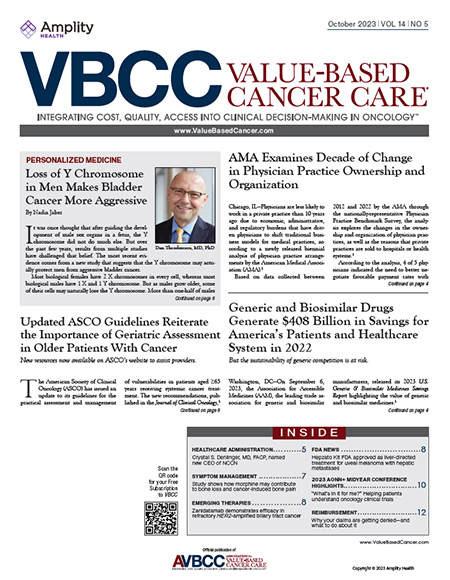During the December 4 session of the Association for Value-Based Cancer Care (AVBCC) 10th Annual Summit, panelists discussed recent advances in stem-cell transplantation, the future of these therapies, and how to measure their value.
Philip Cyr, Senior Vice President of Precision Value & Health, who moderated the session, began by explaining that stem-cell transplantation is the cornerstone of hematologic disorders, noting that a number of new innovations and strategies are coming to market. The panel offered many perspectives, including those of clinicians, manufacturers, and payers.
Steven Devine, MD, Associate Scientific Director and Senior Vice President of Research at the Center for International Blood and Marrow Transplant Research® and Chief Medical Officer at the National Marrow Donor Program®/Be The Match®, said we are no longer facing the same barriers that we faced 20 years ago in terms of finding donors for patients. Overall, survival has improved significantly, although many physicians still focus on preventing morbidity and mortality—especially in older patients—and preventing relapse of malignancy after transplant.
From the manufacturer perspective, Michele Korfin, Chief Operating Officer and Chief Commercial Officer of Gamida Cell, emphasized the focus on increasing access and improving outcomes. There are still challenges for certain patient groups, such as ethnic or racial minorities, to find donors. Regarding increasing outcomes, we need to look at efficacy and safety and increase the speed to getting the donor aligned with the patient to avoid risk of relapse or not being able to move forward with transplant. Ms Korfin said she believes that for new therapies to be successful, there needs to be a strong relationship among the biotech innovator, payer, and healthcare provider.
John Fox, MD, MHA, Senior Advisor at PRECISIONvalue, offered the payer perspective, stating that one challenge of stem-cell transplantation is how to assess value. Recent improvements in these therapies include the development of case rates that limit the liability of payers and the use of Transplant Centers of Excellence.
If you haven’t registered for the AVBCC Summit, now is the time! You don’t want to miss out on these timely and insightful webcasts featuring top experts from every area of the cancer care continuum.


